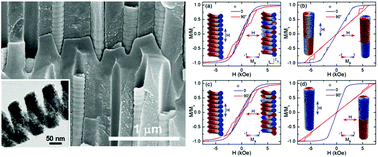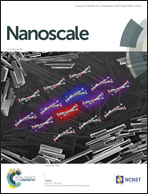Magnetization reversal of ferromagnetic nanosprings affected by helical shape†
Abstract
Helicity, a natural property of macro-, micro-, and nano-objects, potentially offers a new dimension to mechanical and electromagnetic applications for creating emerging nanodevices, such as nanorobots, nanomagnets, nanosensors, and high-density magnetic memory. Helical magnetic nanosprings are unique objects with remarkable magnetic properties, including the absence of stray fields in remanence owing to the chiral geometry, which makes them promising for data storage devices, nanoelectromechanical systems, and biomedical usage. Here, we investigated Co and CoFe nanospring arrays electrodeposited in highly ordered nanoporous templates. We report helical-shape-driven magnetization reversal of the nanosprings in comparison with the behavior of dipolarly coupled nanowires. We reveal two magnetization reversal modes depending on the orientation of the external magnetic field: coherent rotation of magnetization in the longitudinal geometry and three-dimensional vortex domain wall motion in the transverse geometry. The experimental findings are supported by analytical calculations and micromagnetic simulations that help to explain the field-dependent spin configurations observed by magnetic force microscopy.



 Please wait while we load your content...
Please wait while we load your content...